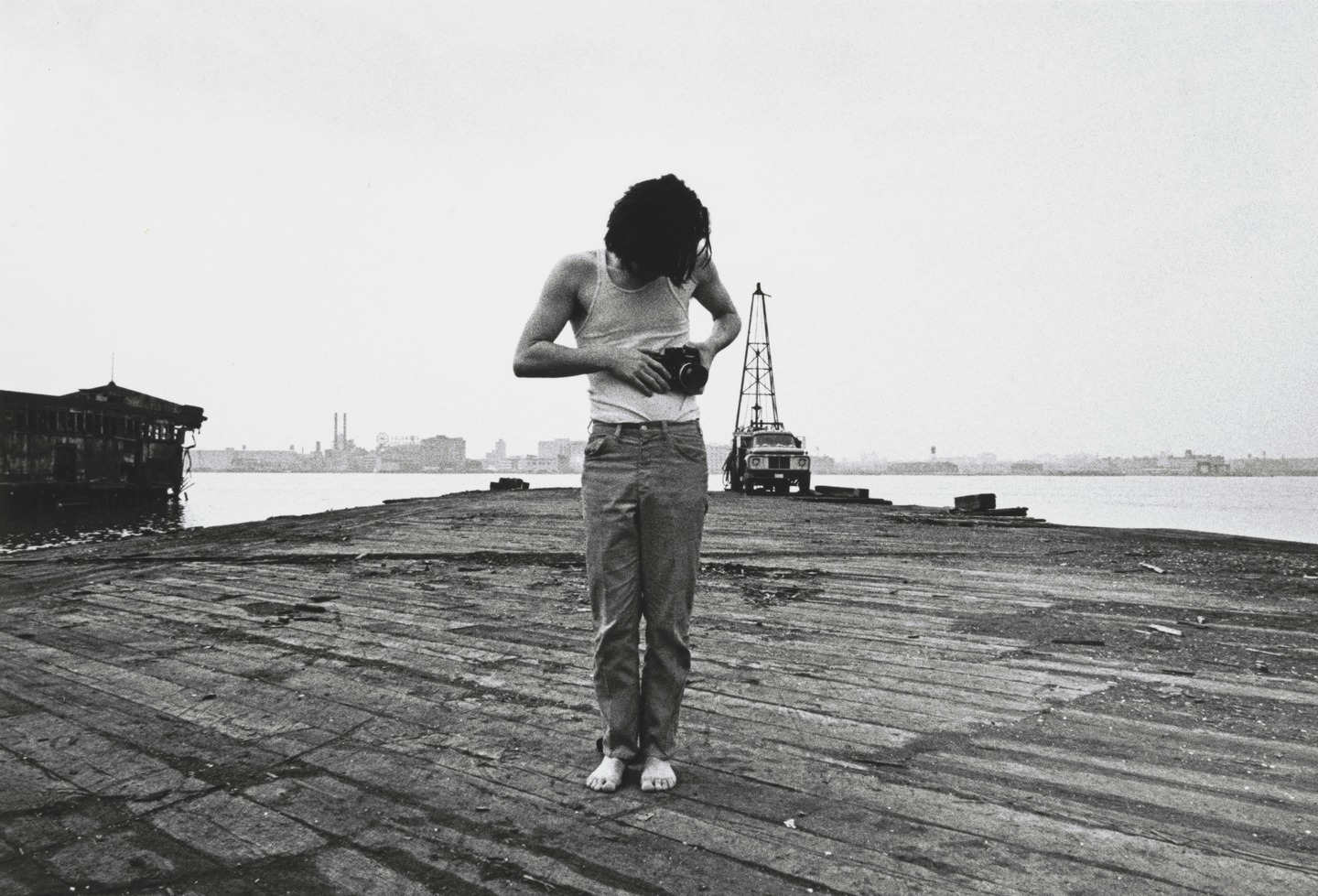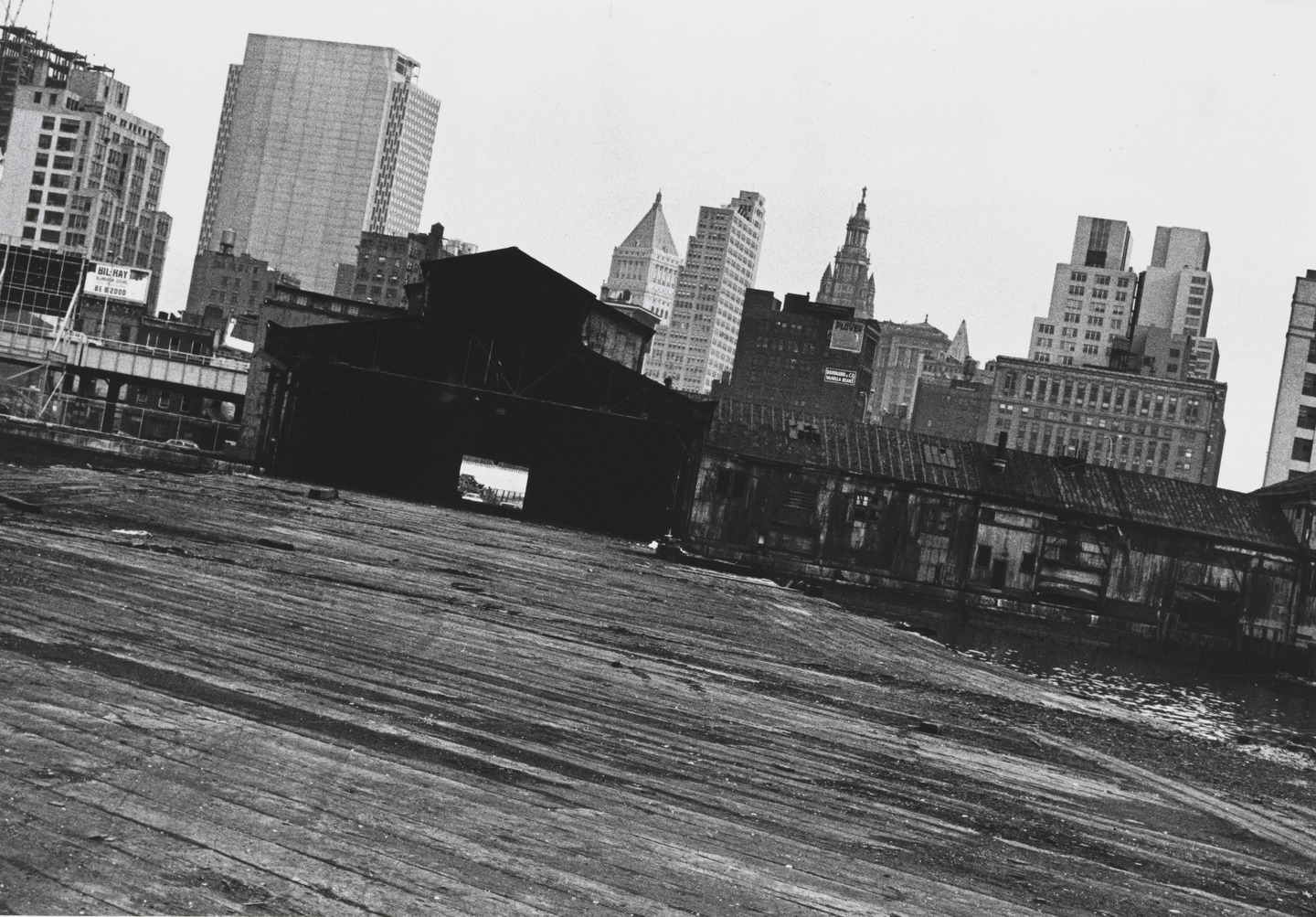2019/20 Course Description: Mediation
The camera generates events other than the photographs anticipated as coming into being through its mediation, and the latter are not necessarily subject to the full control of the agent who holds the camera.1
In the photograph below, artist Dan Graham is pictured at the Pier 18 exhibition curated by Willoughby Sharp in 1971.2 Graham is seen holding a standard SLR camera to his torso, standing at the end of the pier, his back to the Hudson River.

"Dan Graham-Pier 18"
Dan Graham with Harry Shunk, János Kender, 1971
Slightly askew, the next photograph (below) frames the beginning of a pier and the buildings of lower Manhattan. This photo has no figure, just the pier. The two images constitute a small selection of the photographic series of Graham’s performance. Half of the photos are of Graham, the other half are by Graham. The photographs of Graham were captured by the renowned photographic duo Harry Shunk and János Kender.

"Dan Graham-Pier 18"
Dan Graham with Harry Shunk, János Kender, 1971
The resulting series constitute a conversation between the artist and the photographers, between the images that each captured, and between the highly framed and random content of the photographs. The photographs by Shunk-Kender reveal the artist’s process, while Graham’s photographs reveal candid and unexpected images of New York City, documenting not only the random vistas that different parts of his body were “seeing” but also the state of New York City in 1971. Seen individually, Graham’s photos are abstractions, while Shunk-Kender’s are simply documentation. When viewed as a group, however, the images mediate each other’s meaning. Graham’s random photos are given context, while Shunk-Kender’s photos are given depth.
For the 2019/20 iteration of Media Studies, we focussed our research on the conceptual and critical possibilities of mediation - the process by which an idea, event, or situation is translated from one medium to another. In the example above, the act of photographically documenting the event transforms the meaning of the event, regardless of the photographer’s intent or the intent of the people involved in the action. The process of transforming a live action into a still image mediates the event and creates the potential for new meanings.
Graham’s work was used to introduce the subject and the general theme of mediation to the Media Studies students at the beginning of the year. By not looking through the viewfinder, Graham was critically engaging his medium (photography) by removing a fundamental condition for the creation of the image, that is, his own subjectivity. He produced unexpected results that were a mediation between his body and the city. Additionally, the presence of the photographers Shunk-Kender re-mediated the performance by providing photographic documentation and exposing the process by which Graham staged his own images.
In the quote that begins this text, theorist Ariella Azoulay expands the mediating potential of the camera by pointing out that the camera itself is a generating force. With these ideas forming the starting point for our collective research, the projects created by the 2019/20 Media Studies cohort answer the following research questions:
- What are the creative potentials in harnessing the transformative potentialities of mediation?
- What generative results can be gained through the process of mediation?
This website documents each of the projects produced during the 2019/20 school year, a year marked by unimaginable changes. These projects were submitted just weeks before London entered lockdown and as a result, some projects are proposals, sketches, or diagrams of completed works. Some contain preliminary ideas about how the work would be performed or installed, before such options were impossible. Several students changed the scale of their projects and installed them in their flats, or reimagined them in a digital space. Despite these challenges, the work contained in this site is a sampling of highly creative, intensely personal, and sometimes confronting projects that actively engage a wide range of contemporary issues and conditions.